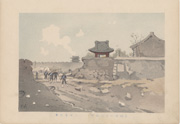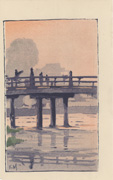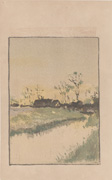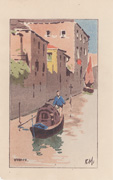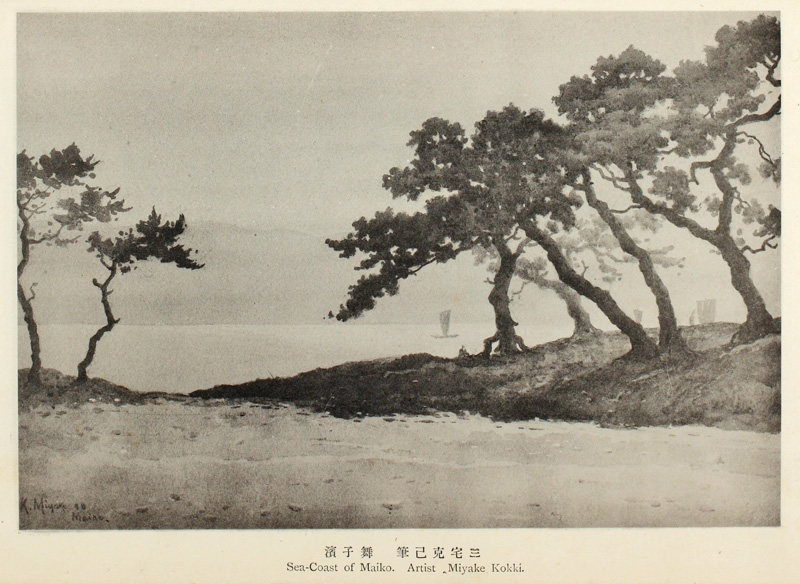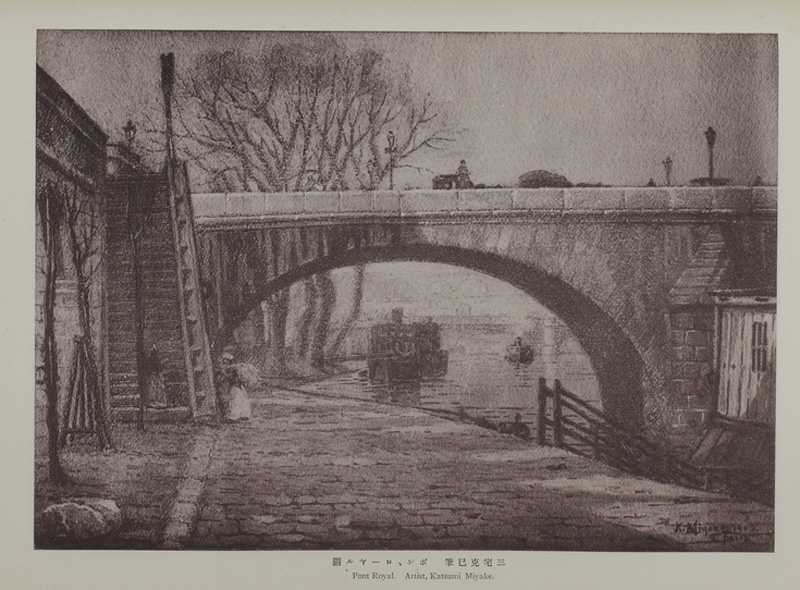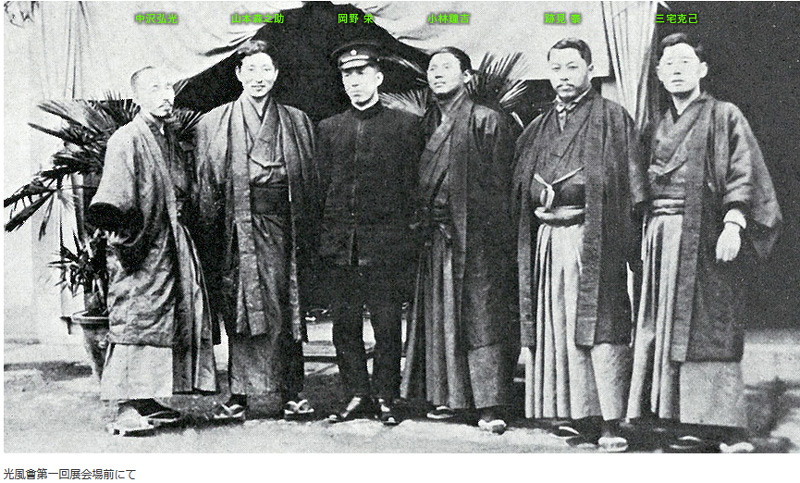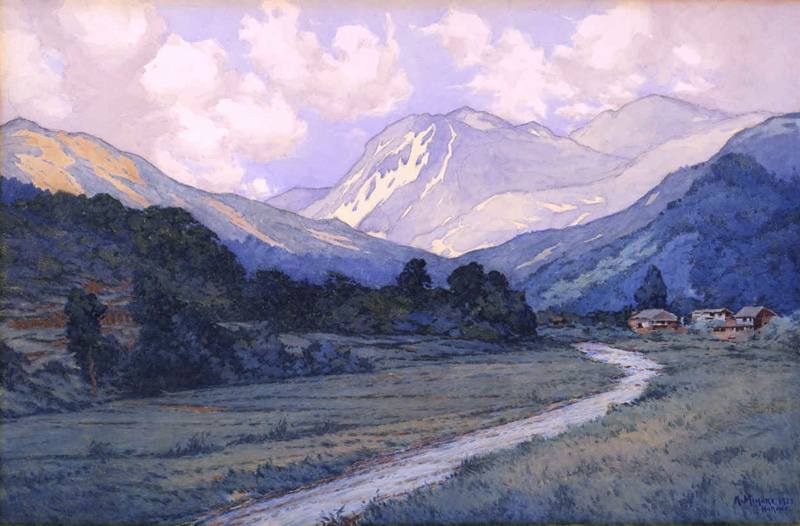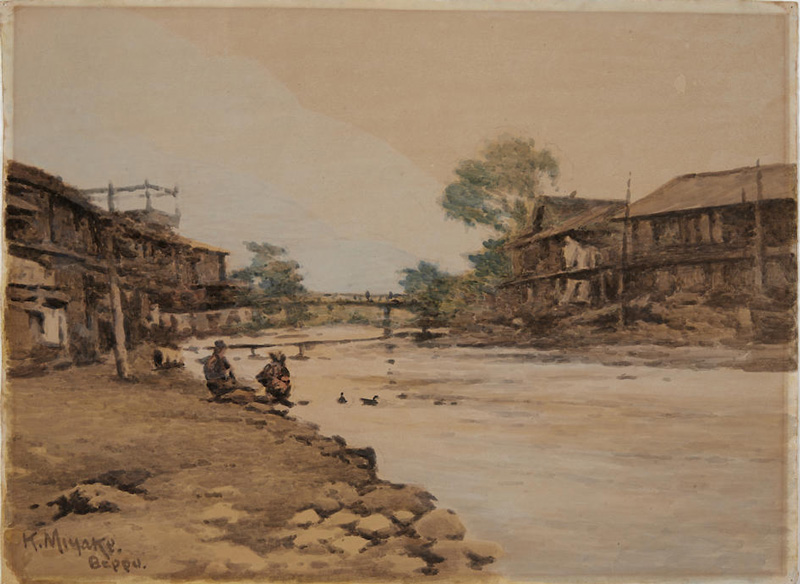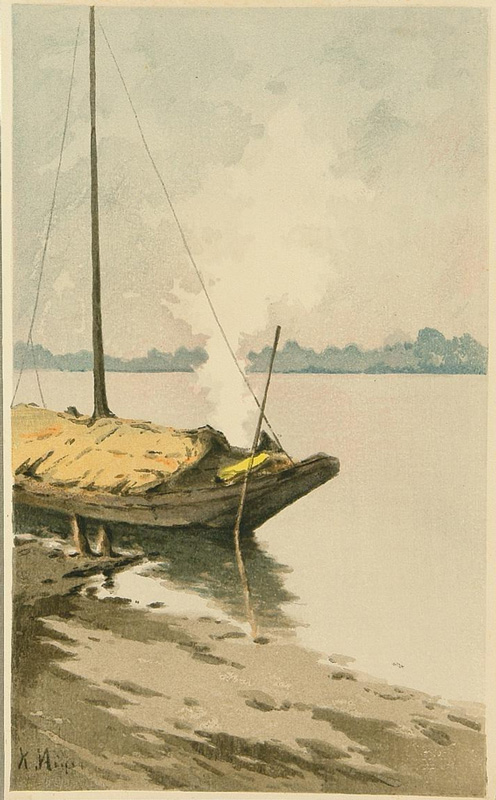Jinzhou Castle After Occupation, 1904
IHL Cat. #1431
c. 1910-1925
IHL Cat. 1365
untitled (Canal),
c. 1910-1925
IHL Cat. #1366
Venice,
c. 1910-1925
IHL Cat. #1367
Biography
Sources: Guide to Modern Japanese Woodblock Prints: 1900-1975, Merritt, Helen and Nanako Yamada, University of Hawaii Press: Honolulu, 1992 p. 91; website of the Yugawara Municipal Museum of Art and as footnoted.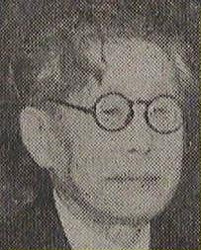 | Miyaki Katsumi 三宅克己 or 三宅克巳 ] (1874-1954) [also known as Miyake Kokki ([ミヤケコッキ)] Miyake Katsumi, also known as Miyake Kokki, was a pioneering watercolor painter in Japan known for his realistic style and impressionistic palette. Born in Tokushima in Tokushima prefecture, he moved to Tokyo at an early age. While still a teenager he studied Western-style painting at Daikō-kan, the private painting school of Soyama Yukihiko (1859-1892) [also known as Ono Sachihiko, Ono Yoshiyasu and Soyama Sachihiko] and with the Western-style painter Harada Naojirō (1863-1899). In 1891 he attended an exhibition in Tokyo of the British watercolor painter John Varley, Jr. (1850-1933) and decided to devote himself to watercolor. In commenting on this exhibition, Miyake wrote, "When I saw this [exhibition], suddenly I felt that the entrance to the world I should be entering opened in front of my eyes."1 His |
Returning to Japan in 1899, Miyake became a member of the White Horse Society (Hakubakai), dedicated to promoting plein-air French academic painting, exhibiting at their shows as well as with the Meiji Fine Art Association (Meiji Bijutsukai). In 1899, the magazine Bijutsu gahō 美術画報 (Fine Arts Magazine) noted, "Painting in Japan is still in its infancy and especially that of water colors. Recognizing this fact, the artist of this picture [see below] went to Europe with the object of acquainting himself more fully with Western water color painting. The training he received in Europe and particularly in England has so improved his painting as to give a new life to this art in Japan."6
By 1902, Miyake’s work was widely known to the art world. Fine Arts Magazine (Bijutsu gahō) called him “the most skillful artist of European water color painting” in Japan and featured a reproduction of his watercolor painting Pont Royal ポン・ローヤル, shown below.7
Western-style watercolor painting found a ready audience in Japan who embraced its similarities to Nihonga, Japanese-style painting and by 1905, Miyake’s work was extensively “published in the popular magazines, such as Stars (Myōjō 明星), The World of Junior High Students ( Chūgaku sekai 中學世界), along with his own magazine Mizue (みずえ), published along with watercolorists Ōshita Tōjirō 大下藤次郎 (1870-1911) and Maruyama Banka 丸山晩霞 (1867-1942)."8
In 1907, Miyake showed at the 1st Bunten Exhibition and he continued to show at the Bunten and its successor exhibitions the Teiten and Shin Bunten, eventually being appointed a judge at Teiten. In 1912, the year after the demise of the Hakubakai, he helped found another association of Western-style painters, the Kōfūkai (光風会), also contributing to its magazine Kōfū.
Miyake was active as an amateur photographer and co-founded the Tokyo Photographic Research Society in October 1904. He would go on to publish the very popular introduction to photography Shashin noutsuhikata (How to Take Photographs) in 1906 and serve as adviser to the magazine Camera which “was launched to promote amateur hobby photography” in1921.9
In 1919, Miyake authored a multi-volume instruction manual for watercolor painting titled 描法解説 水彩新畫集 (Explaining the Technique of New Watercolor Painting). The cover for volume 4 is shown below.
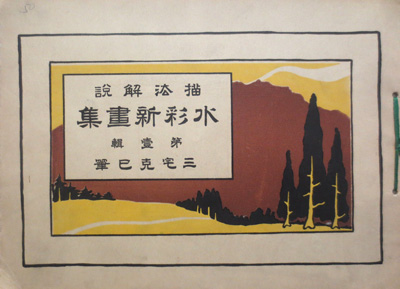
“In 1926, Kokki tookup residence in Manazuru, a town with a view of the Sagami Bay. He repeatedly praised the beauty of the Oriental Riviera in his paintings. After that, he distanced himself from various painting circles. He spent the rest of his life painting realistic landscapes using traditional British watercolor techniques.”10
In 1951, three years before his death, he was officially recognized for his contributions to Yōga (Western-style painting) and appointed a member of the Japan Arts Academy (Nihon Geijutsu-in) with the honor of receiving the Imperial Prize (Onshi-sho).11
In 1938, Miyake wrote his autobiography titled Omoi izuru mama ni (Just as I Remember It). Only excerpts have been translated into English.
Two Examples of the Artist's Watercolor Paintings
The Artist's Prints
In September 1911, the publisher Seibido released A Compilation of Water-Colour-Painting in Wood Engraving (水彩画譜: 精巧木版) consisting of six prints "painted by Miyake Katsui and engraved by Igami Bonkotsu" (1875-1933). Tonegawa no Takasebune (Flatboat on the Tone River), shown below, is one of the six prints which were tipped into the album. The book notes, "These Water-Colour Paintings are painted by K. Miyake, engraved on wood by B. Igami [Igami Bonkotsu 伊上凡骨 (1875-1933)] and Printed by K. Nishimura [Nishimura Kumakichi 西村熊吉 (1862-?)] ."12
As to how many prints Miyake produced and his role in their production, there is little additional information, with Merritt commenting in Guide to Modern Japanese Woodblock Prints, only that he “made lithographs as well as woodblocks.”
1 Japan Society Proceedings
2 "Alfred Parsons, RA, PRWS (1847-1920) and the Japanese Watercolour Movement," Watanabe Toshio appearing in Britain & Japan: Biographical Portraits, Renaissance Books, Folkestone, pp. 284-291, 2015
3 Complete Woodblock Prints of Yoshida Hiroshi, Tadao Ogura, Abe Corporation, 1996, p. 23.
4 Japanese Legacy: Four Generations of Yoshida Family Artists, Laura W. Allen, Kendall H. Brown, Eugene M. Skibbe, et. al., The Minneapolis Institute of Arts, 2002, p. 24.
5 Searching For a Cultural Diplomacy, Jessica C E Gienow-Hecht; Mark C Donfried, Berghahn Books, 2013, p. 192.
7 Fine Arts Magazine (Bijutsu gahō), Vol. XII, No. 5., December 5, 1902.
8 "Li Shutong and the Evolution of Graphic Arts in China" by Su-Hsing Lin appearing in East Asian Journal, Vol. II, 2007, p. 91
9 The History of Japanese Photography, Anne Tucker, Kōtarō Iizawa, Naoyuki Kinoshita, Yale Univ. Press, 2003, p. 376.]
10 https://yugawara.kokosil.net/en/place/00001c00000000000002000000370159
11 For more information on the Japan Art Academy see their website http://www.geijutuin.go.jp/en/
12 To see a black and white e-copy of this print book go to http://kindai.ndl.go.jp/info:ndljp/pid/850979
last update:
